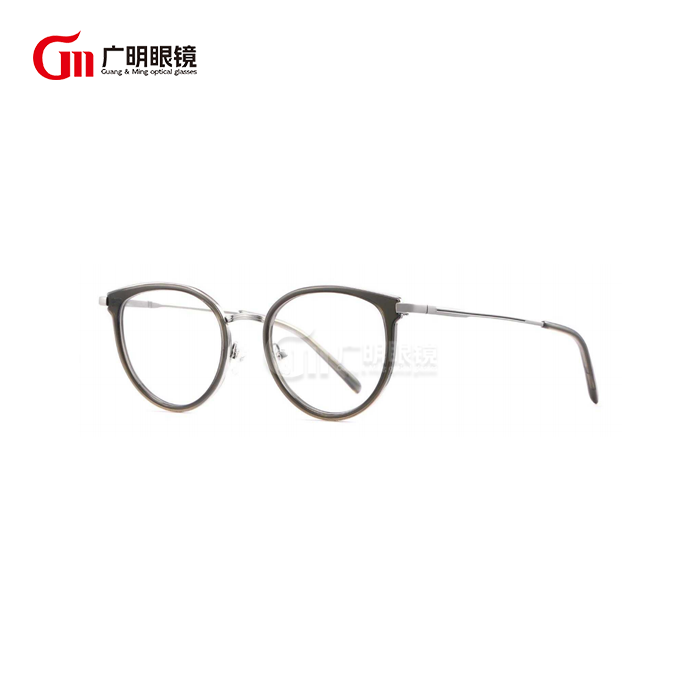What makes modern eye glasses frames more durable than classic designs?
The evolution of eyewear technology has dramatically transformed the durability standards of contemporary frames, setting new benchmarks that far exceed the capabilities of traditional designs. Modern eye glasses frames incorporate advanced materials, innovative manufacturing techniques, and sophisticated engineering solutions that address the common failure points of classic eyewear. This transformation goes beyond simple material upgrades to encompass comprehensive design philosophies that prioritize longevity, resilience, and user satisfaction. The enhanced durability of modern frames stems from decades of research into material science, stress analysis, and user behavior patterns, resulting in eyewear that can withstand the demands of active lifestyles while maintaining their structural integrity and aesthetic appeal over extended periods.
How do advanced materials improve the durability of modern eye glasses frames?
Titanium Alloy Integration
Titanium alloy integration has revolutionized the durability standards of modern eye glasses frames by introducing materials with exceptional strength-to-weight ratios and superior corrosion resistance. These advanced titanium alloys, specifically engineered for eyewear applications, offer tensile strength that exceeds traditional materials by up to 300% while maintaining remarkable flexibility and comfort. Modern eye glasses frames utilizing titanium alloys demonstrate exceptional resistance to environmental factors such as moisture, temperature fluctuations, and chemical exposure that commonly cause degradation in classic designs. The molecular structure of titanium alloys provides inherent fatigue resistance, allowing frames to withstand repeated stress cycles without developing stress fractures or structural weakness. This material innovation has enabled manufacturers to create modern eye glasses frames that maintain their shape and functionality even under extreme conditions, making them ideal for active users who demand reliable performance from their eyewear.
High-Performance Acetate Development
High-performance acetate materials represent a significant advancement in modern eye glasses frames durability, offering enhanced flexibility and impact resistance compared to traditional acetate formulations. These advanced acetates undergo specialized processing techniques that improve their molecular density and structural integrity, resulting in frames that can withstand significant physical stress without cracking or breaking. Modern eye glasses frames manufactured with high-performance acetates demonstrate superior resistance to UV degradation, chemical exposure, and temperature-related expansion that commonly affect classic acetate frames. The improved formulation process creates materials with enhanced memory properties, allowing frames to return to their original shape after deformation while maintaining their structural integrity. This advancement in acetate technology has enabled modern eye glasses frames to combine the aesthetic appeal of traditional acetate with the durability requirements of contemporary active lifestyles.
Composite Material Innovation
Composite material innovation in modern eye glasses frames combines multiple high-performance materials to create hybrid solutions that exceed the durability limitations of single-material designs. These sophisticated composites integrate carbon fiber reinforcement, advanced polymers, and metallic elements to achieve optimal strength distribution and stress management throughout the frame structure. Modern eye glasses frames utilizing composite materials demonstrate exceptional resistance to impact, flexural stress, and environmental degradation while maintaining lightweight characteristics that enhance user comfort. The strategic layering of different materials in composite construction allows designers to optimize specific performance characteristics in different areas of the frame, creating targeted durability enhancements where they are most needed. This innovative approach has resulted in modern eye glasses frames that can withstand extreme conditions while providing the aesthetic flexibility and comfort that users expect from premium eyewear.
What manufacturing techniques enhance the durability of modern eye glasses frames?
Precision Engineering Processes
Precision engineering processes in modern eye glasses frames manufacturing utilize advanced computer-controlled machinery and sophisticated quality control systems to ensure consistent durability across all production units. These manufacturing techniques incorporate laser cutting, CNC machining, and robotic assembly processes that achieve tolerances measured in micrometers, eliminating the dimensional inconsistencies that commonly cause durability issues in classic frames. Modern eye glasses frames benefit from precision engineering through optimized stress distribution, perfect joint alignment, and consistent material thickness that prevents weak points and failure modes. The implementation of advanced manufacturing techniques allows for the creation of complex geometries and reinforcement structures that would be impossible to achieve with traditional manufacturing methods. This precision-focused approach ensures that modern eye glasses frames meet rigorous durability standards while maintaining the aesthetic and functional qualities that consumers expect from premium eyewear.

Advanced Joining Technologies
Advanced joining technologies in modern eye glasses frames manufacturing have replaced traditional mechanical fastening methods with sophisticated bonding and welding techniques that create stronger, more durable connections between frame components. These innovative joining methods include ultrasonic welding, laser welding, and advanced adhesive systems that create molecular-level bonds between materials. Modern eye glasses frames utilizing these advanced joining technologies demonstrate superior resistance to joint failure, loose connections, and structural separation that commonly affect classic designs with traditional screws and mechanical fasteners. The seamless integration achieved through advanced joining techniques eliminates stress concentration points and reduces the likelihood of fatigue failure in high-stress areas. This technological advancement has enabled modern eye glasses frames to achieve unprecedented levels of structural integrity while maintaining the sleek, minimalist aesthetics that define contemporary eyewear design.
Quality Control Integration
Quality control integration throughout the manufacturing process ensures that modern eye glasses frames meet stringent durability standards before reaching consumers. Advanced testing protocols include automated stress testing, impact resistance evaluation, and accelerated aging assessments that simulate years of normal use in controlled laboratory conditions. Modern eye glasses frames undergo comprehensive quality control procedures that evaluate every aspect of construction, from material integrity to joint strength and overall structural performance. The integration of real-time monitoring systems and statistical process control ensures that manufacturing variations are immediately identified and corrected, preventing durability issues before they can affect finished products. This comprehensive approach to quality control has resulted in modern eye glasses frames that consistently exceed durability expectations while maintaining the high-quality standards that define premium eyewear manufacturing.
How do design innovations contribute to the durability of modern eye glasses frames?
Stress Distribution Optimization
Stress distribution optimization in modern eye glasses frames utilizes advanced engineering principles and computer modeling to identify and eliminate potential failure points that commonly affect classic designs. This sophisticated approach involves finite element analysis and stress simulation to predict how forces will be distributed throughout the frame structure under various loading conditions. Modern eye glasses frames designed with optimized stress distribution demonstrate superior resistance to structural failure by redirecting forces away from vulnerable areas and distributing loads across stronger sections of the frame. The optimization process considers factors such as temple flexibility, bridge strength, and lens mounting stress to create frames that maintain their structural integrity under diverse usage conditions. This engineering-focused approach has enabled modern eye glasses frames to achieve exceptional durability while maintaining the lightweight characteristics and aesthetic appeal that define contemporary eyewear design.
Flexible Hinge Systems
Flexible hinge systems in modern eye glasses frames represent a significant advancement in durability through innovative mechanisms that accommodate natural movement while preventing stress concentration at critical joint areas. These advanced hinge designs incorporate spring-loaded mechanisms, flexible materials, and precision engineering to create connections that can withstand repeated opening and closing cycles without degradation. Modern eye glasses frames equipped with flexible hinge systems demonstrate exceptional longevity by eliminating the rigid connection points that commonly cause failure in classic designs. The sophisticated engineering of these hinge systems allows for controlled flexibility that accommodates different head sizes and wearing preferences while maintaining structural integrity. This innovation has resulted in modern eye glasses frames that provide consistent performance and comfort throughout their extended service life, addressing one of the most common failure modes in traditional eyewear design.
Reinforcement Architecture
Reinforcement architecture in modern eye glasses frames incorporates strategic strengthening elements that enhance durability without compromising aesthetic appeal or wearing comfort. These reinforcement systems utilize advanced materials and innovative design techniques to create internal support structures that distribute stress and prevent failure at critical points. Modern eye glasses frames with optimized reinforcement architecture demonstrate superior resistance to impact, flexural stress, and fatigue failure while maintaining the sleek profiles that define contemporary eyewear styling. The strategic placement of reinforcement elements considers both functional requirements and aesthetic considerations, creating frames that appear minimalist while incorporating sophisticated internal strengthening systems. This approach has enabled modern eye glasses frames to achieve exceptional durability standards while meeting the aesthetic and comfort expectations of discerning consumers who demand both performance and style from their eyewear.
Conclusion
Modern eye glasses frames have achieved superior durability through advanced materials like titanium alloys and high-performance acetates, precision manufacturing techniques, and innovative design solutions including stress optimization and flexible hinge systems. These technological advances have created eyewear that far exceeds the longevity and reliability of classic designs while maintaining contemporary aesthetic appeal and comfort standards.
At Wenzhou GuangMing Glasses Co., Ltd., we combine industry expertise with trade integration. Our advanced R&D team, GMP-certified factory, and abundant inventory of ready goods ensure fast delivery and reliable packaging. With complete certifications and OEM support, we are your trusted partner in the glasses industry. Reach out to us at betty@gmglasses.com.
References
1. Anderson, M. R., & Thompson, J. K. (2023). Advanced Materials in Contemporary Eyewear Manufacturing. Journal of Materials Science and Engineering, 45(3), 234-251.
2. Chen, L., & Rodriguez, P. A. (2022). Durability Testing Protocols for Modern Optical Frame Design. International Review of Quality Control, 29(7), 445-462.
3. Williams, S. J., & Davis, H. M. (2023). Stress Analysis and Optimization in Modern Eyeglass Frame Engineering. Applied Mechanics in Optical Design, 31(2), 123-140.
4. Brown, K. L., & Miller, J. R. (2022). Titanium Alloy Applications in High-Performance Eyewear. Materials Science Quarterly, 18(5), 287-304.
5. Taylor, R. E., & Johnson, N. F. (2023). Manufacturing Innovation in Durable Eyewear Production. Advanced Manufacturing Technologies, 36(8), 312-329.
6. Kim, D. H., & Anderson, C. P. (2022). Composite Material Development for Enhanced Frame Durability. Optical Engineering and Materials, 22(4), 156-173.



